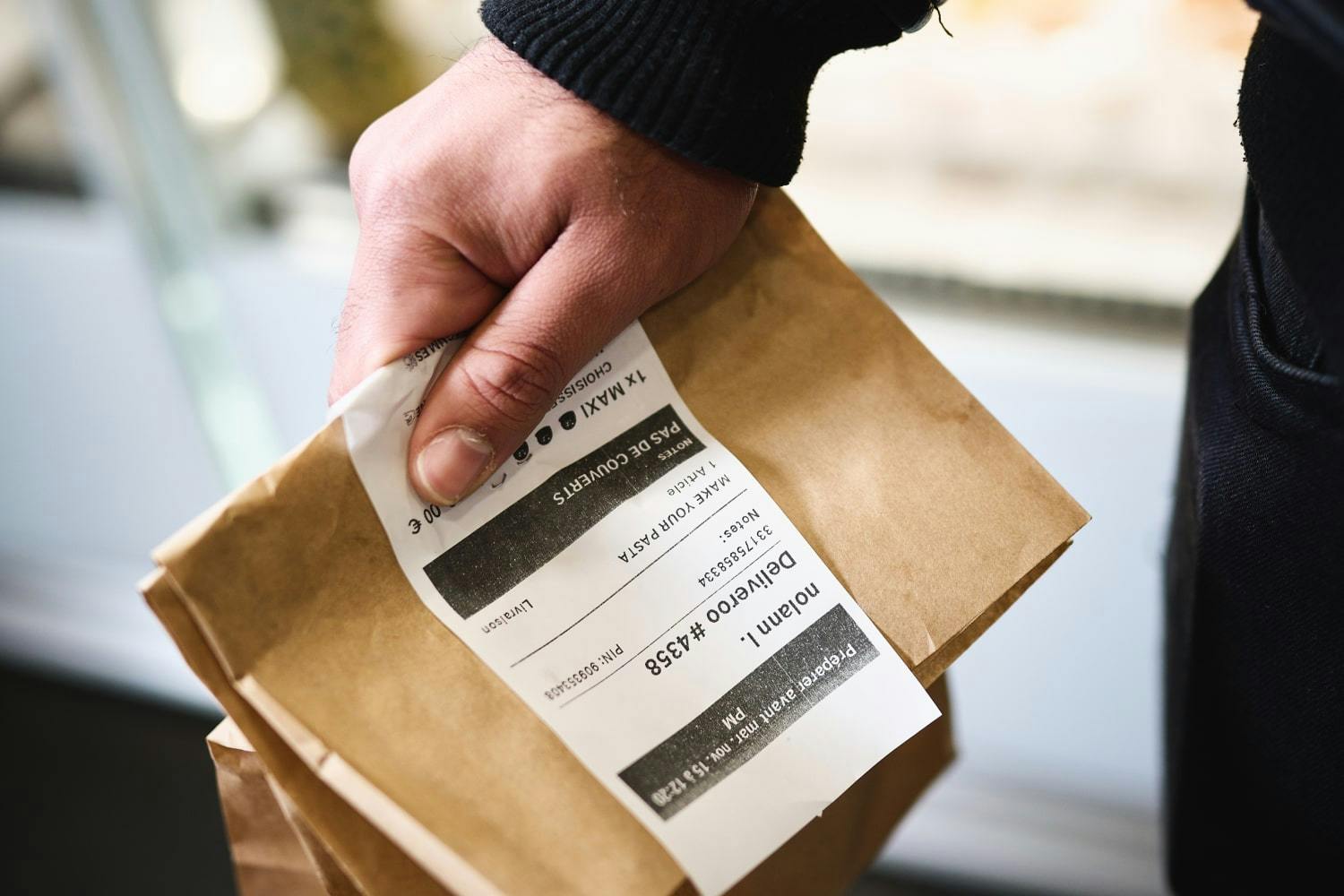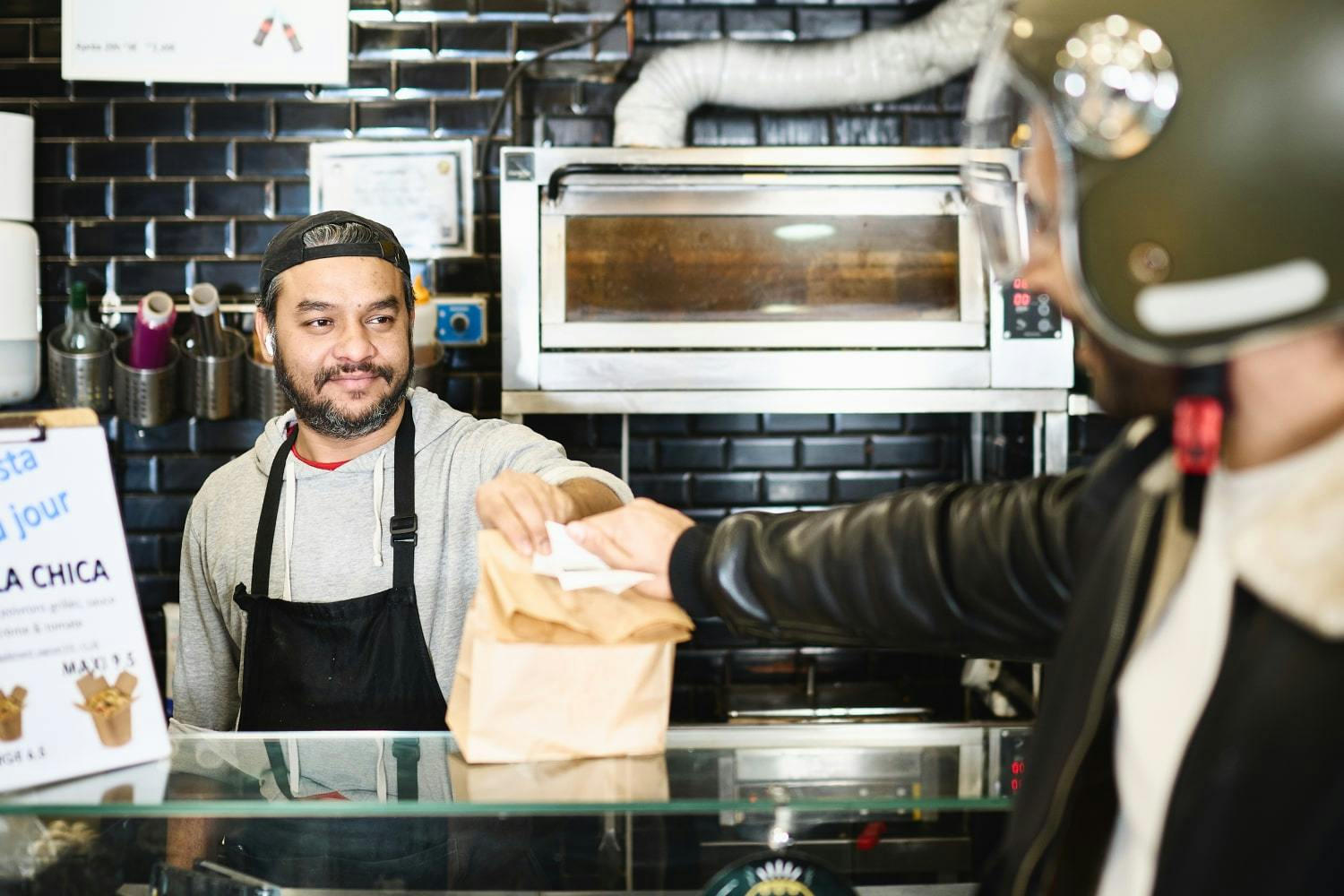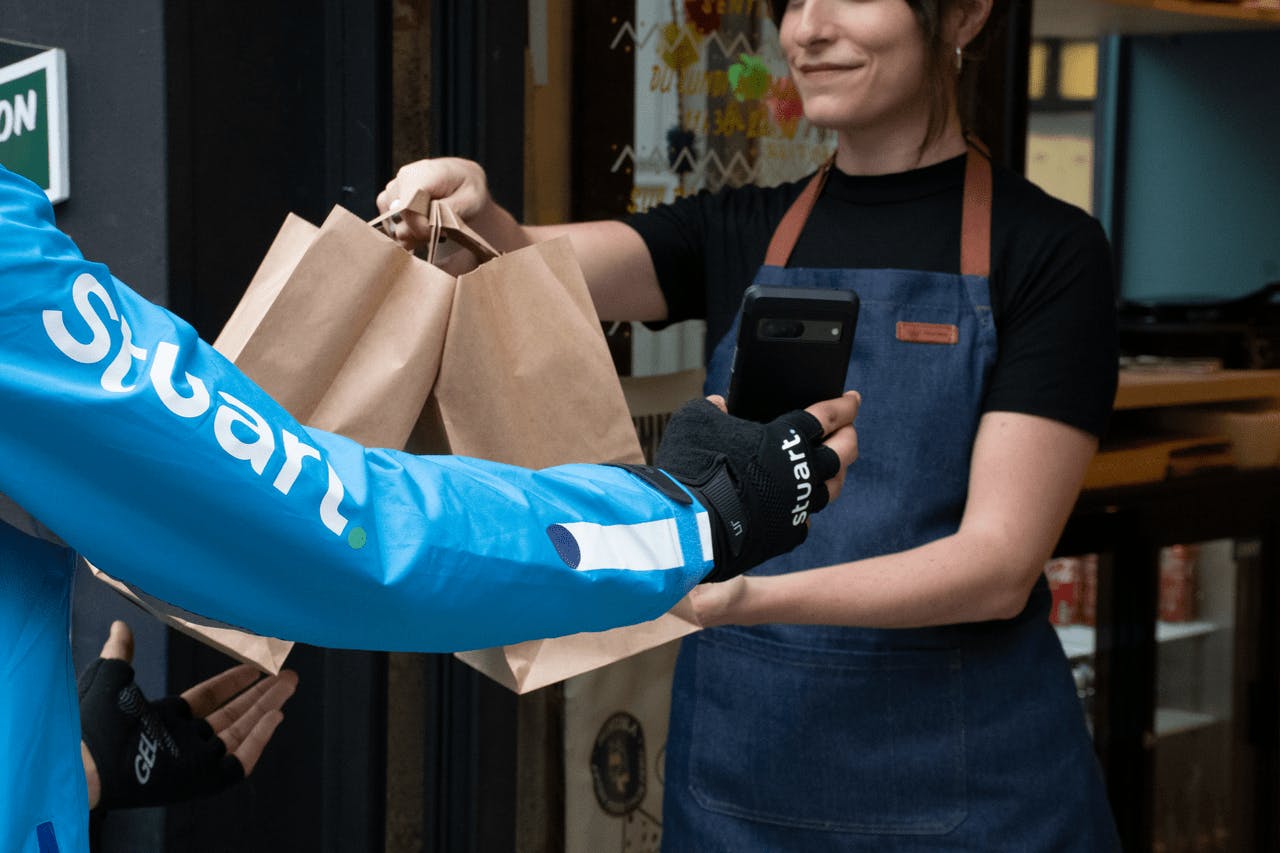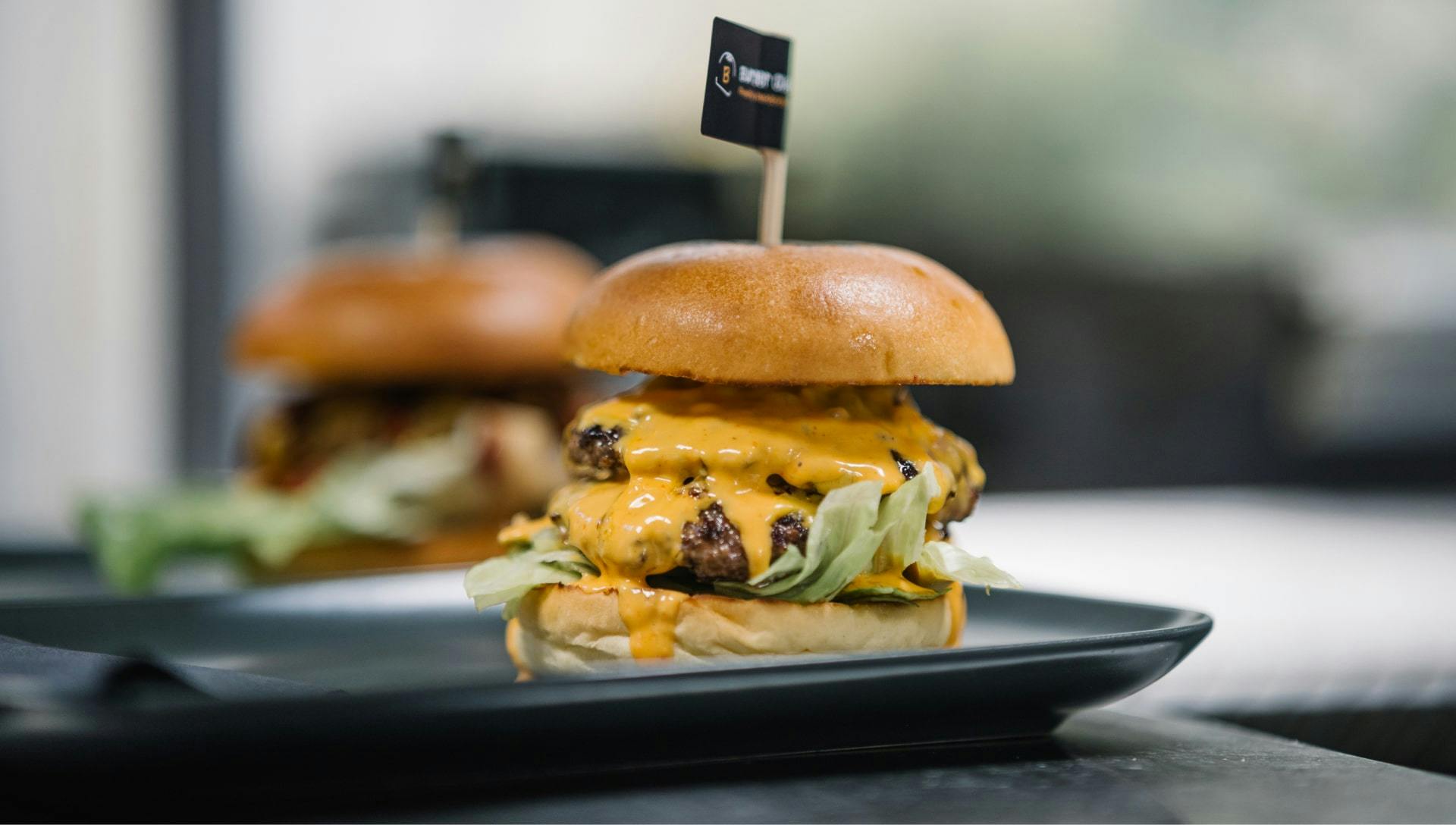
This post was written in collaboration with Stuart, Otter’s partner and Europe’s leading last-mile logistics provider.
Less than a decade ago, few restaurants offered delivery to their customers. The ones that did were primarily pizzerias and sushi, Indian, and Chinese restaurants. They delivered these orders with their own fleet of drivers, who were as much part of the staff as waiters.
Today, the food delivery landscape has dramatically changed. Every type of cuisine is available for delivery, from local food joints to gourmet restaurants. Moreover, most restaurants now deliver their orders through third-party delivery services, such as marketplaces like Uber Eats or logistics partners like Stuart.
Unlike marketplaces, delivery partners don’t charge commission fees on each basket order, and they leave restaurants in control of the ordering experience via their website or mobile app. Ultimately, it lets restaurants decide how much to charge their customers for delivery fees.
By all accounts, it seems like the perfect middle ground for restaurants that want to avoid the logistical complexity of running their own fleet of drivers without giving up their customer data and a share of their margin on each order.
But the resistance of global food chains like Domino’s that prefer to stick with their in-house fleet should give us pause and make us carefully weigh the pros and cons of outsourcing delivery to a third party.

The cons of outsourcing delivery
Less control over the customer experience
Delivery is an integral part of the customer experience. A bad delivery can damage your restaurant’s reputation just as much as a bland dish. To ensure this last step is as seamless as the ordering process, managing an in-house fleet of drivers remains the gold standard.
Employees on a partial or full-time contract receive a fixed salary or an hourly wage that is not dependent on the number of deliveries they complete per hour. They’re incentivised to provide a high-quality service to gain their employer's trust and remain in the company rather than to complete as many deliveries as possible in a given timeframe. They’re also more directly impacted by the restaurant’s profits and losses and have every interest in ensuring the restaurant succeeds.
On the other hand, gig workers make a living by completing as many deliveries as possible in a day. This sometimes leads to a rushed service and poor delivery experience for the customer, with food not properly transported or meals not being delivered in person.
Refund policies get tricky
If an issue arises during the delivery process, the customer will first ask for a refund from the delivery service provider. This is where things can get tricky: what if the delivery partner doesn’t take responsibility? Who’s to blame for a spilt drink, for example? Is it the courier—and ultimately the delivery service—because they didn’t transport the drinks properly, or is it the restaurant’s poor packaging?
If the restaurant and the delivery partner can’t agree on who should refund the customer, the latter can be referred from one Customer Support service to another without finding an adequate solution. Ultimately, this situation results in a poor customer experience and a client not ordering from the same restaurant again. Indeed, when a bad delivery occurs, studies show that customers blame the restaurant more than the delivery service, and 20% say they wouldn’t order from the restaurant again.

The pros of outsourcing delivery
Better suited for a restaurant's service cycle
Working with an external delivery partner is by far the most cost-effective solution, as it allows restaurants to connect with a courier on demand as soon as an order is received, rather than paying employees by the hour. This can be particularly costly during periods of lower activity in the restaurant.
This model is more suited to the usual service cycle in the restaurant industry, with peak demand during lunch and dinnertime and a lower activity throughout the day. With a partner like Stuart, restaurants can access an active fleet of thousands of couriers who can easily pick up and deliver their orders when needed.
Save on HR costs and focus on core business
Outsourcing delivery also means restaurants don’t have to recruit and manage a fleet of drivers, which gives them more time and energy to focus on their core business—cooking delicious food. It also means they can centre their human resources investment on training and up-skilling their current restaurant staff, from waiters to cooks, which is ultimately more beneficial.
Letting go of the recruitment process, in particular, is proving to be time-saving for restaurants. Since delivery drivers who want to use motorised vehicles need both motor vehicle insurance and food delivery insurance, recruiters must verify if applicants meet the necessary requirements, which can be time-consuming. Moreover, delivery drivers tend to churn at a higher rate than other paid employees, so outsourcing delivery can help restaurants save on HR costs by avoiding recurrent training programs.
Delivery partners offer a more compelling customer experience
Delivery partners like Stuart provide restaurants with a state-of-the-art tech platform that allows them to offer a frictionless experience to customers. When ordering from a restaurant that works with Stuart as a delivery partner, customers receive an SMS informing them that a courier is on their way to pick up their food. Better yet, they’re given a tracking link so that they can follow their delivery in real time. Additional notifications can then be sent at every step of the delivery, from pick-up to handover.
Finally, when partnering Stuart with an order management system like Otter, restaurants can easily receive all online orders from channels like Just Eat, Uber Eats, Deliveroo, their website, and more through the Otter tablet. It further helps streamline your restaurant operations, from the ordering process to the delivery.
A fully digitised customer experience is not only beneficial to the restaurant clientele–it’s equally valuable for restaurant employees. By providing excellent visibility and precision on delivery statuses from end-to-end, restaurants can significantly reduce phone calls that disturb staff in the restaurant.

Worry less about upfront investment
Opening a brick-and-mortar restaurant is expensive enough, so restaurant leaders will look at every option to reduce investment that isn’t absolutely necessary to start their business. Of course, going all-in and offering delivery from day one can be tempting to attract customers who prefer to enjoy meals at home. But doing so with an in-house fleet will require additional investment in staff and, more importantly, delivery vehicles that are often expensive.
To capture a share of this growing food delivery market—worth more than £13.3 billion in the UK alone in 2022—restaurants can partner with established delivery specialists like Stuart and Otter to help them reach more customers without the upfront investment needed.
With on-demand delivery solutions from specialists like Stuart, restaurants don’t need to pay anything upfront to benefit from the service. All they need to do is create an account in just a few minutes to access the Stuart Dashboard. Here, they can request a courier to pick up and deliver their order.
For restaurants with higher ordering volumes, the Stuart API can be integrated easily into their website to automate deliveries as soon as an order is placed.
If adding another service to your repertoire sounds like too much work, don’t worry. Otter connects all the services that help you run your restaurant so you can focus on what matters most. With Otter, you can manage online orders across all delivery apps, track your restaurant's performance, and create your own commission-free ordering site. Otter customers can integrate directly to Stuart’s interface and instantly connect to a fleet of independent couriers.
Why do Domino's & other brands stick with their in-house fleet?
Delivering food through a third party is so cost-effective and simple—so what’s holding brands like Domino’s back from joining other major corporations like McDonald’s or Burger King that outsource their delivery operations?
First, most restaurants’ resistance against outsourcing deliveries is generally directed at marketplaces—aka food delivery apps—like Uber Eats or Deliveroo. The reason for this is simple: marketplaces extract up to 30% of a restaurant’s profit on each order, which makes achieving profitability difficult for restaurants. As the Wall Street Journal reports, “the company’s data scientists concluded the partnerships would take too big a slice of profit from Domino’s and its franchisees”.
Second, Domino’s is an exception in the restaurant ecosystem; they’re pioneers in delivery just as much as in pizza-making. They’ve offered delivery to their customers since they opened in the ’60s in America and have been one step ahead of the industry ever since. In the ‘80s, they were already promising pizza delivery in 30 minutes or less, and they launched their own online ordering system in 2008 when most restaurants were still relying on phone calls only to take orders. As delivery has always been a foundational piece of its business, Domino’s already has everything in place to make food delivery profitable at scale, from trained staff and advanced delivery vehicles to technological abilities.
Because pioneers like Domino’s have a competitive advantage based on decades of experience, outsourcing delivery is often the best way for newcomers to capture a share of the market left and provide a customer experience that rivals the one offered by their competitors.

Choose Stuart x Otter as your reliable delivery partners
Otter and Stuart share the same belief that efficient deliveries can empower businesses. By joining forces, we aim to simplify the order management and delivery process and ensure that restaurants can focus more on what's important to them—their customers and their food.
Stuart’s integration with Otter offers restaurants a convenient all-in-one tech solution for restaurants, from order-taking to delivery. The service automatically assigns drivers to each of your digital orders, whether they come from your own website or food delivery apps.
You’ve been looking for a solution to maximise your profits on each and everyone of your sales channels? Your search ends here. Book a chat with us below to learn more about Stuart x Otter joint delivery solution.



